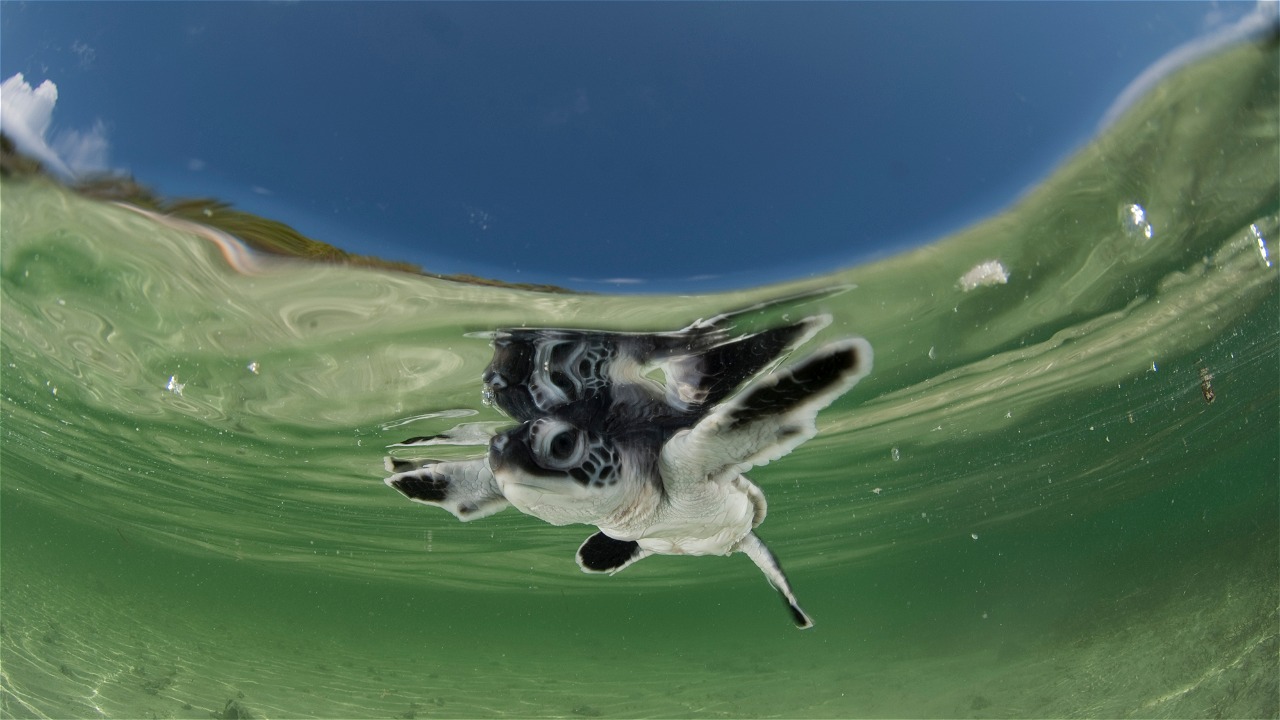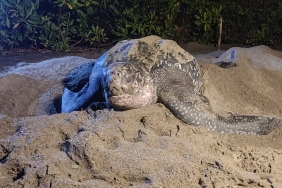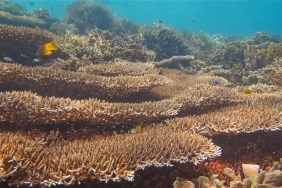THE CHILDREN OF BAJO: WE LOVE SEA TURTLE
By Eddy Hamka
At the end of last January, Mr. Arianto and I had the chance to visit Mantigola and Horuo Village in Kaledupa Island, Wakatobi District, who obtained Better Management Practices (BMP) training on reef fish and tuna. These villages are separated from the main land, around 1 km from the shore. An extensive mangrove area could be seen on either side of the island where fishermen usually collect firewood for cooking. There are also houses above the water, inhabited by Bajo people. Unfortunately, around 3 months ago, a local bridge which help connect the two areas fell down, hampering the acccess from both sides. People use small boat as an alternative transportation.
The life of Bajo people is really fascinating. They completely depend their lives from the sea. Their rowing ability is never in doubt, no wonder they always contribute gold medals in National Sports Week because of their ability. In this occasion, we are planning to conduct a second survey regarding the assessment of the people’s obedience toward BMP on reef and tuna fisheries. The purpose is to see whether there are any improvement on the implementation of BMP in the area and also conduct a problem identification. Roy, a staff from FORKANI, a local commnity organization, was chosen to be the guide for the survey.
During the survey, I accidentally saw a little kid playing with a hawksbill sea turtle. This has caught my attention, without any hesitation I took some pictures and videos. Not long after, the mother called to his son, fearing her child might get caught by us. Sea turtle in Bajo community is a sensitive issue. If people get caught with sea turtle in their hand, the authorities are not hesitant to put them into jail. After listening to her explanation, we eventually confirmed to her that we are not park rangers.
The incident lingered in my head for some time, and I decided to interview local people, Mr. Roy and Mr. Arianto. It was revealed that in the 80s sea turtle exploitation was rampant, mostly for business purpose or even only for children’s company.
Another interesting thing from Bajo is that the children are used to keeping the sea turtle since they were little at their house. According to Mr. Isdin, a local teacher, when he was little he would keep a hatchling until it grows big (25-30 cm) and eventually released into the sea. This could negatively affect the surviving ability of sea turtle in the wild. The reason on why they keep hatchlings is because they feel that the survival rate of hatchlings in the wild is very low, therefore it is their own intention to look after the hatchling until they get bigger. Me, still puzzled by the explanation, asked several others in the area and got the same kind of answers. From the explanations I know that children of Bajo have high affection towards sea turtle.
Sea turtle in Bajo are treated like any other pets in common. They are put into sands to lay eggs, given an adequate food, and happily play in the water everyday. The hatchlings were usually obtained from captivity or brought over by the parent when looking for sea turtle’s eggs in Hoga Island, Kaledupa and several other uninhabited islands around Wakatobi.
I am relieved to see how intimate the children of Bajo and the sea turtle are attached to one another. It was revealed that the captivity had an area of 50 × 50 meter and surrounded by walls, just about enough to accommodate 20 sea turtles and a number of groupers. According to one fisherman, a lot of children from Wanci Island and Northern Mola Village used to keep sea turtles in captivities. I am grateful to be a part of this amazing experience, and I am convinced that the sea turtle conservation in Wakatobi is safe for generations to come.
Translated by Imanda Pradana





